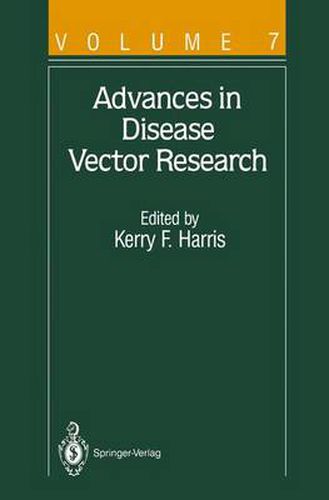Readings Newsletter
Become a Readings Member to make your shopping experience even easier.
Sign in or sign up for free!
You’re not far away from qualifying for FREE standard shipping within Australia
You’ve qualified for FREE standard shipping within Australia
The cart is loading…






This title is printed to order. This book may have been self-published. If so, we cannot guarantee the quality of the content. In the main most books will have gone through the editing process however some may not. We therefore suggest that you be aware of this before ordering this book. If in doubt check either the author or publisher’s details as we are unable to accept any returns unless they are faulty. Please contact us if you have any questions.
We open Volume 7 with a series of four chapters on plant virus transmission by insects. In Chapter 1, Karen Gibb and John Randles present preliminary information about an association between the plant bug Cyrtopeitis nicotianae (Heteroptera: Miridae) and velvet tobacco mottle virus (VTMo V): the only reported instance of mirid transmission of a known virus. Mirids could be considered as likely vectors of plant viruses because they are phytophagous, possess a piercing-sucking-feeding apparatus, have winged adults, and are cosmopolitan pests of a wide range of crops. Surprisingly, however, there are only three plant viruses purportedly transmitted by heteropterous vectors, compared with the nearly 250 by homopterous ones. To what extent these figures reflect actual differences in the abilities of members of the two suborders to transmit plant pathogens remains to be determined. Compared with the Homop- tera, the Heteroptera have been ignored by researchers as potential vectors of plant viruses. The authors are quick to point out that additional studies are needed before generalizations can be made about virus-mirid-plant interactions and that virus transmission by mirids is not easily characterized using the conventional transmission criteria and terminology established for such homopterous vectors as aphids and leafhoppers. Transmission of VTMoV by C. nicotianae appears to have characteristics in common with both nonpersistent noncirculative and circulative (persistent) transmission.
$9.00 standard shipping within Australia
FREE standard shipping within Australia for orders over $100.00
Express & International shipping calculated at checkout
This title is printed to order. This book may have been self-published. If so, we cannot guarantee the quality of the content. In the main most books will have gone through the editing process however some may not. We therefore suggest that you be aware of this before ordering this book. If in doubt check either the author or publisher’s details as we are unable to accept any returns unless they are faulty. Please contact us if you have any questions.
We open Volume 7 with a series of four chapters on plant virus transmission by insects. In Chapter 1, Karen Gibb and John Randles present preliminary information about an association between the plant bug Cyrtopeitis nicotianae (Heteroptera: Miridae) and velvet tobacco mottle virus (VTMo V): the only reported instance of mirid transmission of a known virus. Mirids could be considered as likely vectors of plant viruses because they are phytophagous, possess a piercing-sucking-feeding apparatus, have winged adults, and are cosmopolitan pests of a wide range of crops. Surprisingly, however, there are only three plant viruses purportedly transmitted by heteropterous vectors, compared with the nearly 250 by homopterous ones. To what extent these figures reflect actual differences in the abilities of members of the two suborders to transmit plant pathogens remains to be determined. Compared with the Homop- tera, the Heteroptera have been ignored by researchers as potential vectors of plant viruses. The authors are quick to point out that additional studies are needed before generalizations can be made about virus-mirid-plant interactions and that virus transmission by mirids is not easily characterized using the conventional transmission criteria and terminology established for such homopterous vectors as aphids and leafhoppers. Transmission of VTMoV by C. nicotianae appears to have characteristics in common with both nonpersistent noncirculative and circulative (persistent) transmission.